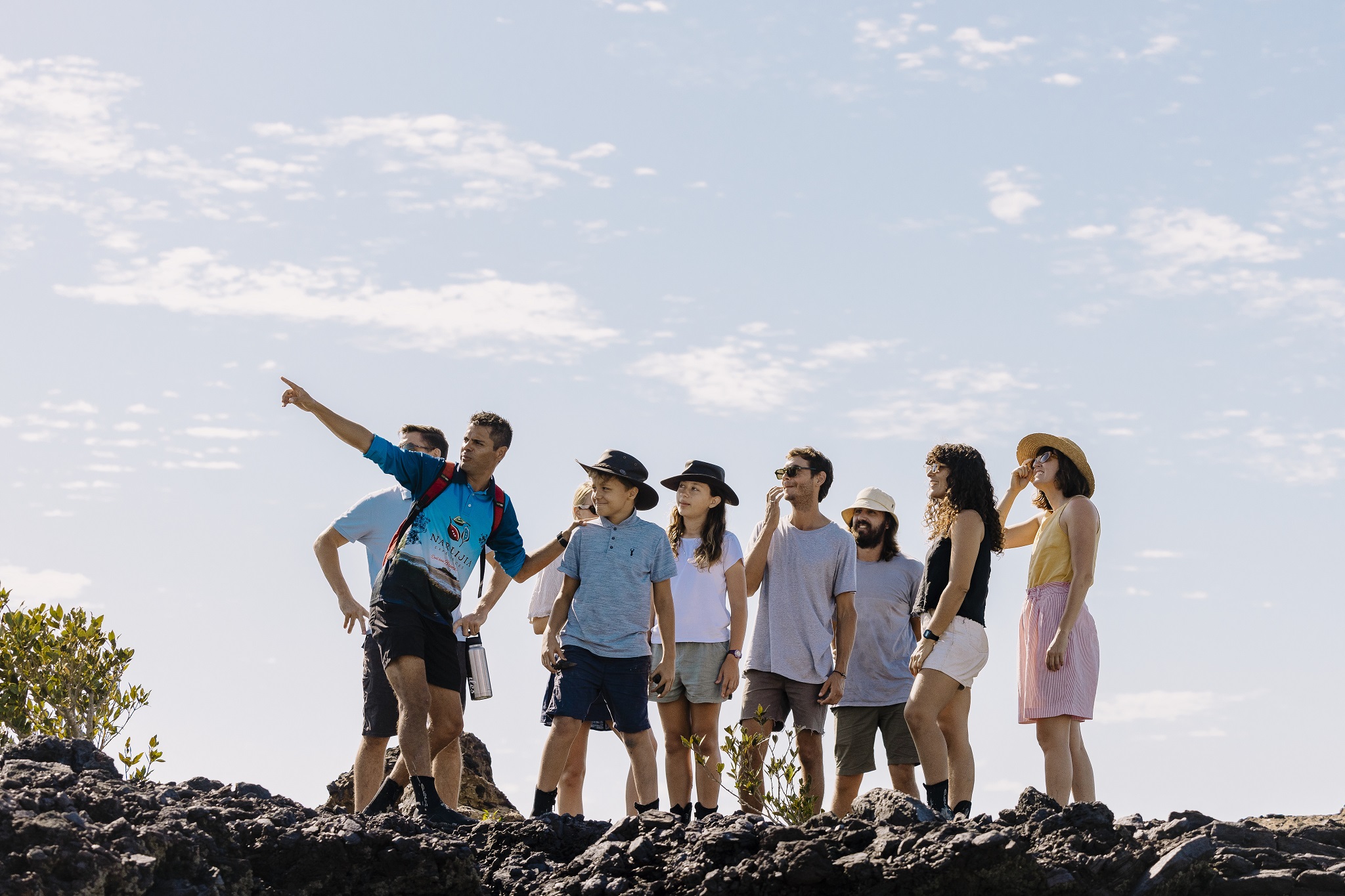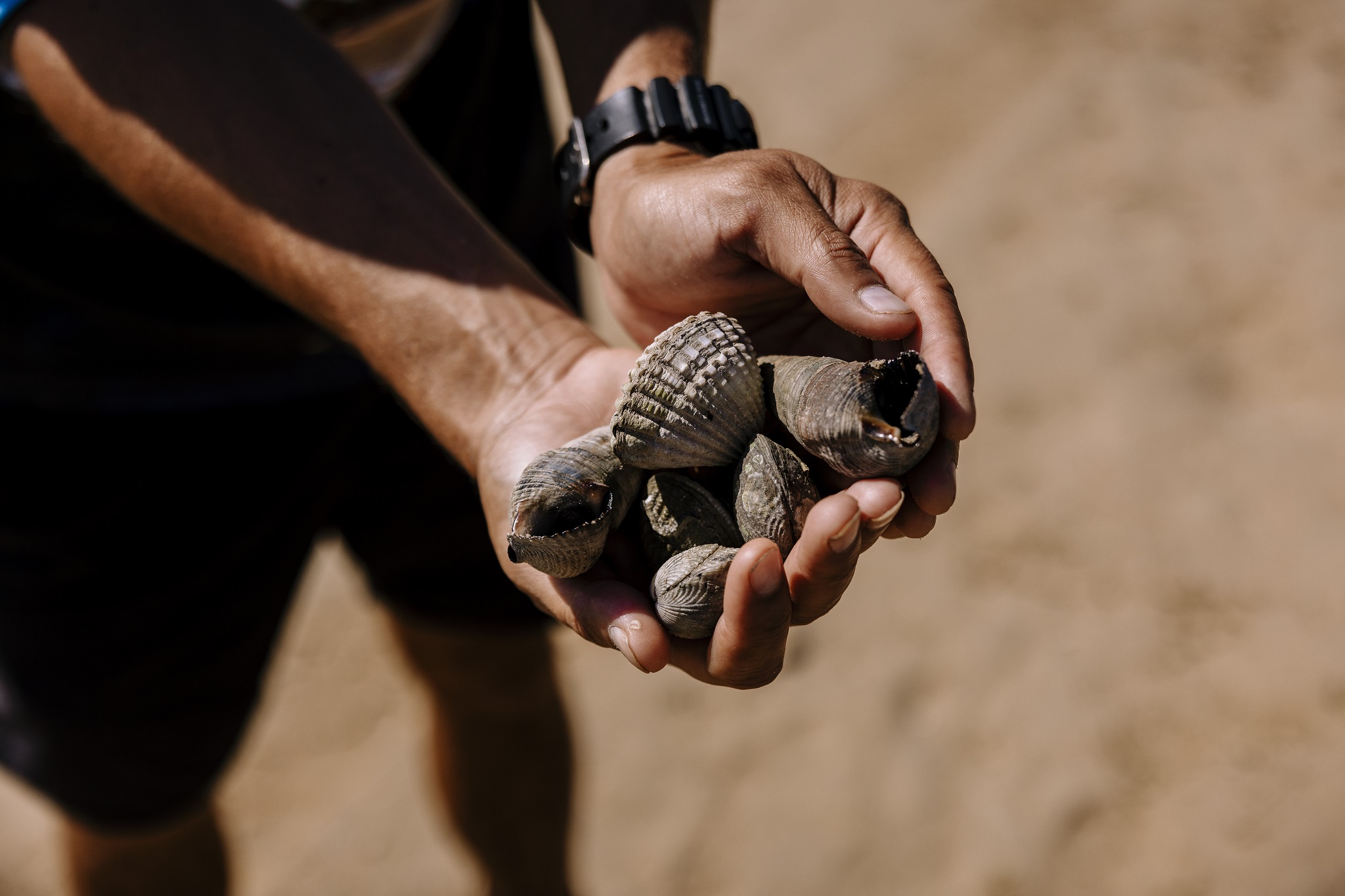Bart Pigram – Narlijia Experiences
The Yawuru man from the Kimberley region of Western Australia tells a fascinating story of Country, community and culture on his daily Broome tours.

Narlijia Experiences, Broome, WA © Tourism Australia
Be prepared for the unexpected when you visit Broome, says Yawuru man Bart Pigram. “It’s hard to believe places like Broome exist when you see it for the first time: where white sand meets pindan soil between the turquoise water of the Indian Ocean and the mangroves of Roebuck Bay.”
Broome is known for its amazing 22-kilometre Cable Beach, its sunsets, camels and pearls. But there’s much more to the city than what you see on the surface. And through his Narlijia tours, Bart is ready to help you take a deep dive.

Mangrove Discovery Experience, Narlijia Experiences, Broome, WA © Tourism Australia
“The beauty of Country here, its richness and diversity, reveals itself in layers. When you see it – really see it – through an Indigenous lens you understand its depth of culture. Like that the Aboriginal communities have more than 20 names for Cable Beach because it plays such an important role to their saltwater people.”
Indeed, Aboriginal heritage here stretches back millennia. “Modern-day Broome was built around the pearling rush in the late 1800s,” says Bart. “I’m the product of ancient and modern, just like Broome itself, and I have Aboriginal, Asian and European heritage. My family, like many others here, also has links back to the pearling boom.
“The pearling history brought a lot of people to this part of the country to seek their fortunes, from all over Australia but also all over Asia – Broome’s Chinatown is epic. There are more than 55 languages spoken around town, which is pretty amazing. There’s also a diverse number of Indigenous nations represented here, too. The people who live here are still in touch with their Aboriginal heritage, and it still holds incredible integrity.”
Today, Bart’s tours focus on Broome’s mangroves.“Most people drive straight past them. But this is still an abundant food bowl. When I take people foraging here I show them how my people have been living and eating for 20,000 years – in just two hours. We collect shellfish like pipis, cockles, mangrove snails, razor clams, crabs and molluscs and chuck them straight on the fire and eat them.

Narlijia Experiences, Broome © Tourism Australia
“I also take people to a lookout that’s home to a major shell midden, Broome’s largest. You need to visit with an Indigenous guide to understand the significance of this place. The clearing is littered with shells that have bleached white over the thousands of years they’ve lain in the sun. This is where my people, the Yawuru, would come together to eat and watch over the bay. They’d leave behind the shells to let those passing by later know what had been eaten, and hence what to avoid to ensure conservation of species.”

Dinosaur footprint, Narlijia Experiences, Broome, WA © Tourism Australia
The other big attraction in town reveals itself when the tide goes out. “I tell people to think big when they visit Broome. Really big. The area here is home to 135-million-year-old dinosaur footprints, representing 21 species including sauropods, ornithopods and stegosaurus. Dinosaurs roamed the coastal marshes and swamp forests, leaving tracks in the sandy tidal flats and abandoned river channels. At low tide you can go check them out at places like Reddell Beach, Cable Beach and Gantheaume Point.”